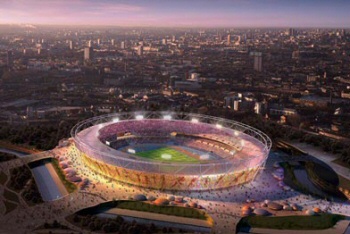The Olympic Stadium
 The Olympic Stadium, situated in East London's Stratford area, was the site for the Summer Olympics in 2012. The arena is the third biggest sports ground in Britain and has the capability to hold around 80,000 people. Preparation for the structure began in 2007, and the official start date for construction was in May of 2008. Additionally, in 2017, the arena will host the World Championships. The design for the Olympic Stadium was launched in 2007. The design was created by Populous, an architectural firm that specializes in convention centres and sports arenas.
The Olympic Stadium, situated in East London's Stratford area, was the site for the Summer Olympics in 2012. The arena is the third biggest sports ground in Britain and has the capability to hold around 80,000 people. Preparation for the structure began in 2007, and the official start date for construction was in May of 2008. Additionally, in 2017, the arena will host the World Championships. The design for the Olympic Stadium was launched in 2007. The design was created by Populous, an architectural firm that specializes in convention centres and sports arenas.
Design and Construction
Total construction time on the stadium was four years. Starting in 2007 and finishing in 2011. The natural incline of the land was incorporated into the design. At the lower end of the site, warm-up areas were dug into a basement position. A demountable steel and concrete tier has been built to accommodate more spectators.
Sustainable fabric panels are wrapped around the stadiums exterior and embossed with a mural-like design. The design plan calls for no food outlets inside the stadium, which reduces the need for higher levels of fire protection that is associated with cooking. As an alternative, architects have planned concourses outside the arena. This type of design was inspired by the World Cup, where spectators gathered to eat and watch the action of the games.
A cable supported roof structure was designed and constructed to allow for fast assembly and to make it easier to disassembly. To keep costs down the roof is made of PVC fabric. The stadium is one of the most sustainable structures ever built. The stadium features low-carbon concrete that contains 40 percent less carbon than usual. Surplus gas pipes were used to construct the top ring of the arena. Steel and concrete use was kept to a minimum by designing the lower portion of the stadium to sit underground.
Within the stadium, facilities for the athletes will include a warm-up track, medical support and changing rooms. Outside the venue there will be merchandise outlets, spectator services and refreshments. The stadium was designed with the intention to be flexible enough for to accommodate a variety of requirements for future use.
The current site of the Olympic Stadium is on former industrial land. The property is like an island surrounded by water and the existing waterways at the island site will be modified to surround the arena. Access to the stadium will be granted using several bridges for people to walk across that will be placed around the perimeter of the building. The site has now begun to be referred to as Stadium Island, because of the location and design. This name may possibly define the site for years to come.
Current Usage
Currently, the unique stadium will be the centrepiece for the 2012 games, hosting the athletic events, as well as the opening and closing ceremonies. After the games the stadium will convert down to a 60,000 permanent stadium. Several potential tenants are interested in occupying the stadium after the Olympic Games. Among possible tenants interested are several of London's, rugby, cricket and football clubs. A decision will be made in May of 2012, as to who will be the preferred bidder for the stadium. However, in the future, the stadium will continue to be a venue for athletic sports and community events, leaving a lifelong legacy.
The closest London Underground Stations to the Olympic Stadium are Stratford, Hackney Wick, Bow Road, Bromley by Bow, Mile End and Leyton.
